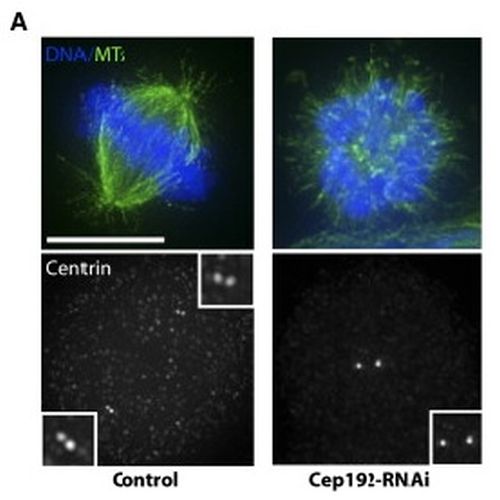The mammalian SPD-2 ortholog Cep192 regulates centrosome biogenesis.
Centrosomes are the major microtubule-organizing centers of mammalian cells. They are composed of a centriole pair and surrounding microtubule-nucleating material termed pericentriolar material (PCM). Bipolar mitotic spindle assembly relies on two intertwined processes: centriole duplication and centrosome maturation. In the first process, the single interphase centrosome duplicates in a tightly regulated manner so that two centrosomes are present in mitosis. In the second process, the two centrosomes increase in size and microtubule nucleation capacity through PCM recruitment, a process referred to as centrosome maturation. Failure to properly orchestrate centrosome duplication and maturation is inevitably linked to spindle defects, which can result in aneuploidy and promote cancer progression. It has been proposed that centriole assembly during duplication relies on both PCM and centriole proteins, raising the possibility that centriole duplication depends on PCM recruitment. In support of this model, C. elegans SPD-2 and mammalian NEDD-1 (GCP-WD) are key regulators of both these processes. SPD-2 protein sequence homologs have been identified in flies, mice, and humans, but their roles in centrosome biogenesis until now have remained unclear. Here, we show that Cep192, the human homolog of C. elegans and D. melanogaster SPD-2, is a major regulator of PCM recruitment, centrosome maturation, and centriole duplication in mammalian cells. We propose a model in which Cep192 and Pericentrin are mutually dependent for their localization to mitotic centrosomes during centrosome maturation. Both proteins are then required for NEDD-1 recruitment and the subsequent assembly of gamma-TuRCs and other factors into fully functional centrosomes.

- Curr. Biol. 2008 Jan 22;18(2):136-41
- 2008
- Cell Biology
- 18207742
- PubMed
Enabled by:
